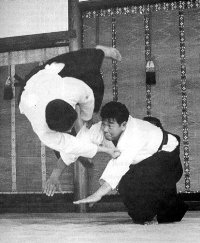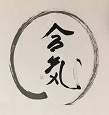Aikido It's Heart and Appearance
by Morihiro Saito (Prelude & page 53)

Top Aikido Master
Who is Aikido for?
When asked what Aikido is, it is difficult to answer the questions in a few words. But when asked for whom Aikido exists, the question is easy to answer. The answer is that Aikido exists for those who ask for it. In a limited sense, the art exists for those who actually practice it. Among the Aikido trainees, there are those who, endowed with glibness, claim to know everything about Aikido. Their actual training, however, belies their words and is not commendable. They lack enthusiasm about their training. I prefer the opposite type. If one examines Aikido patiently for a long time, something is bound to touch your heartstrings. That something is presumably the true answer to the question “What is Aikido?” The answer, therefore, varies as you continue to refine yourself. In my opinion, the answer is sort of an unwritten law which allows all kinds of interpretations but is something which is not forced on you by others.
In guiding his followers, Morihei Uyeshiba, the founder of Aikido, discouraged questions and implanted in the mind of every trainee the attitude of using his own imagination and ingenuity. For the imaginative trainee, the Founder provided answers through his bodily demonstrations which were so convincing. The Founder certainly was not hesitant and sparingly in imparting the essence of the art but put the emphasis of his teaching method on encouraging the trainees to cultivate their own eyes for a deeper meaning of Aikido.
How to Train
What is important in training is to build you up by degrees. If you are at it diligently, you will acquire the desired strength naturally even when you are unaware of the proficiency you are gaining. On the other hand, if you are in too much of a hurry to master the art, you will definitely remain a faulty trainee and a slave to a bad habit incorrigible for a lifetime. This is worth remembering.
